Winter Stars in the Northern Hemisphere
“Know The Stars And You Will Always Have A Compass”. (Michael Punk. 2002. The Revenant)
As we move into winter, new constellations take their place in the night sky of the northern hemisphere including Taurus, Orion, Canis Major and Minor, Perseus, Gemini and Aries.
Taurus, The Bull.
Taurus is one of the most prominent constellations in the northern winter sky. It passes through the night sky from November to March and is visible at latitudes from 90oN to 65oS. Taurus is most visible in January and for the benefit of navigators, it is always on hand for star sights during morning and evening nautical twilight throughout that month.
Taurus is most famous for its red giant star, Aldebaran, which is known as Taurus’ Eye, is the 14th brightest star in the sky and is an important navigational star. The star at the tip of the northern horn of Taurus, Al Nath (sometimes spelled El Nath) is the second brightest star in the constellation and is also a navigational star. In earlier times this star was considered to be shared with the constellation Auriga, forming the right foot of the Charioteer as well as the Northern horn of the bull.
Taurus is associated with several mythological beliefs. In Greek mythology, Zeus was said to have disguised himself as a bull to abduct Europa, the daughter of king Agenor. The ancient Egyptians believed that the constellation represented the sacred bull associated with spring and Babylonian astronomers called it the ‘Heavenly Bull’.
Finding Taurus. If we imagine a line from Phad to Meral in Ursa Major and extend it for a distance of 80o or roughly 4 hand-spans it will point directly to the star Aldebaran in the constellation Taurus. Once we have located Aldebaran the remaining stars of Taurus can easily be identified.
The Pleiades, the ‘Sailing Stars’ or the ‘Seven Sisters’.
The Pleiades form a small star cluster close to Taurus; they are visible between latitudes 90oN and 65oS and are best seen during the month of January. Merope is the brightest of these stars but even so, it not considered to be a navigational star. In ancient times, the Pleiades were called the Sailing Stars because Greek sailors would not put to sea unless they could be seen in the sky.
Another name for the Pleiades is the ‘Seven Sisters’ after Alcyone, Maia, Anterope, Taygeta, Celaena, Electra and Merope from Greek Mythology. Although Pleione was not one of the seven sisters, she along with her consort Atlas is included in the Pleiades Cluster.
Finding The Pleiades The next diagram shows that if, in the constellation Taurus, we draw a line from Aldebaran to Tau Tauri (the two eyes of the Bull) this will point roughly in the direction of the Merope in the star cluster Pleiades which lies about 10o (a palm-width) from Taurus.
Auriga the Charioteer.
The constellation Auriga is in the northern hemisphere and is visible between latitudes 90oN to 40oS. For navigator’s, it is best seen during nautical twilight in February and March.
Capella is one of the navigational stars; it is the brightest star in the constellation Auriga and the 6th brightest in the northern hemisphere.
The diagram below shows the star Al Nath (sometimes spelled El Nath) forming the right foot of the Charioteer and as has already been explained, it was once considered to be shared with the constellation Taurus where it forms the northern horn of the bull. When the constellation boundaries were changed in 1930, Al Nath was assigned solely to Taurus. However, if we still think of Al Nath (the second brightest star in Taurus and also the second brightest in Auriga) as the foot of Auriga, we will have an easy method of finding both Auriga and Taurus as we can see from the diagram below.
In mythology, Auriga is associated with Myrtilus the charioteer because the shape of the constellation was said to resemble a pointed helmet of a charioteer. It is also identified with Hephaestus, the god of the blacksmiths who invented the chariot.
Orion, Canis Major and Canis Minor, The Winter Triangle.
The Winter Triangle is an astronomical asterism formed from three of the brightest stars in the winter sky; Sirius, Betelgeuse, and Procyon, the primary stars in the three constellations of Canis Major, Orion, and Canis Minor which are discussed below. As the following diagram shows, imaginary lines drawn between these stars form an imaginary equilateral triangle drawn on the celestial sphere.
Orion, The Hunter.
Orion is one of the brightest and best known constellations in the night sky it lies straddles the celestial equator and is visible between latitudes 95oN and 75oS. This easily recognized constellation contains 4 navigational stars, Rigel, Belatrix, Anilam and Betelgeuse which, for navigation purposes are best seen during nautical twilight in the month of January.
In Greek mythology, this constellaion represents the mythical hunter Orion, who is often depicted in star maps as either facing the charge of Taurus, the bull, pursuing the Pleiades sisters with his two hunting dogs, represented by the nearby constellations Canis Major and Canis Minor.
Meissa marks the position of the Hunter’s head while Betelgeuse, and Belatrix are his shoulders. Alnitak, Alnilam and Mintaka form his belt and from this hangs his sword which is marked by the Orion Nebula. His right thigh is marked by Saiph and Rigel marks his left foot.
Finding Orion If we take a line from Tau Tauri to Aldebaran in the constellation Taurus and extend this line for roughly three hand-spans we will come to the star Belatrix in Orion as the diagram below shows.
Canis Major, The Greater Dog.
The constellation Canis Major is in the Southern Hemisphere; it is visible from 90oS to 60oN and is best visible from November to March. Canis Major contains Sirius, which is otherwise known as the Dog Star. Sirius is the brightest star in the sky and is a navigational star which for navigation purposes is best seen during nautical twilight during the month of February.
Canis Major is Latin for ‘The Greater Dog’ and is so named because it was said to represent one of the two hunting dogs of Orion the Hunter; the other dog being Canis Minor. In Greek mythology, Zeus sent Laelaps, an alternative name for Canis Major, into the sky when it failed to outrun a fox.
Canis Minor The Lesser Dog.
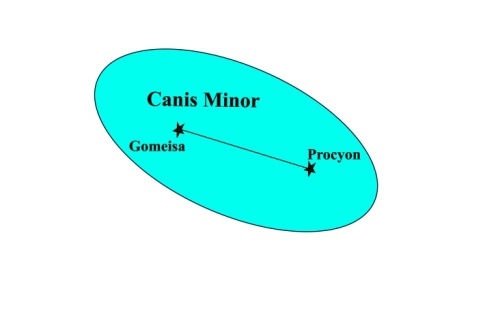 Canis Minor is a small constellation in the northern hemisphere and is visible at latitudes from 85oN to 75oS. Its name means ‘the lesser dog’ in Latin and it is said to represent one of the dogs that follow Orion. In another mythological tale, Canis Minor represents Maera the dog which was sent to the sky by Zeus after it died of grief when its master Icarius was killed. As shown in the diagram, there are only two bright stars in Canis Minor, Gomeisa and Procyon which is a navigational star and which, for navigational purposes is best seen during nautical twilight in March.
Canis Minor is a small constellation in the northern hemisphere and is visible at latitudes from 85oN to 75oS. Its name means ‘the lesser dog’ in Latin and it is said to represent one of the dogs that follow Orion. In another mythological tale, Canis Minor represents Maera the dog which was sent to the sky by Zeus after it died of grief when its master Icarius was killed. As shown in the diagram, there are only two bright stars in Canis Minor, Gomeisa and Procyon which is a navigational star and which, for navigational purposes is best seen during nautical twilight in March.
Perseus.
Although Perseus is circumpolar at latitudes north of 40oN, it can be seen from anywhere north of 35oS during the northern hemisphere’s winter months. This constellation is associated with the Greek mythological hero Perseus who, on the orders of King Polydectes, slayed the Gorgon Medusa who had the power to turn people to stone. Polydectes had hoped that Perseus would not return and when he did, he became hostile. Perseus was so angered by this that he took out the head of Medusa and turned Polydectes to stone. The wife of Perseus was called Andromeda and the constellation that represents her lies side by side with the one that represents him. Even though Perseus’ stars are bright relative to other constellations, Mirfak is its only navigational star and this is best seen for navigation purposes during nautical twilight in December.
Finding Perseus. If a line is drawn from Navi to Ruchbah in Cassiopeia, it will point almost directly towards the star Mirfak of the constellation Perseus at about one hand-span as shown in the diagram below.
Gemini,The Heavenly Twins.
The name Gemini means Twins in Latin and for this reason, it has the alternative name the ‘Heavenly Twins’. The constellation is associated in, Greek mythology, with the twins Castor and Polydeuces. Pollux and Castor, the brightest stars in the constellation are said to form the eyes of the twins. (We use the Latin name Pollux instead of the Greek name Polydeuces).
Gemini is in the northern hemisphere and is visible between 90oN and 60oS. Pollux is a navigational star and is best seen for navigation purposes during nautical twilight in February.
Finding Gemini. As shown in the diagram below, a line running from Megrez to Merak in Ursa Major leads to the constellation Gemini.
Aries, The Ram.
The constellation Aries is located in the Northern Hemisphere and is visible between latitudes 90oN and 60oS. The name Aries, which means Ram in Latin, is associated with Jason and the Golden Fleece in Greek mythology.
Aries is a difficult constellation to see with the naked eye but it can be found about mid way between the Pleiades and the constellation Pegasus which we discussed in part 5 of this series. Pegasus lies to its west, Pleiades to its east as the following diagram shows. (Remember that, in star maps, east and west are reversed). Hamal is the brightest star in Aries and it is a navigational star which, for navigation purposes, is best seen during nautical twilight in the month of December.
The First Point of Aries. Just as the Greenwich meridian has been arbitrarily chosen as the zero point for measuring longitude on the surface of the Earth, ‘the first point of Aries’ has been chosen as the zero point in the celestial sphere. It is the point at which the Sun crosses the celestial equator moving from south to north (at the vernal Equinox in other words). The confusing thing is that, although this point lay in the constellation of Aries when it was chosen by the ancient astronomers, due to precession, it now lies in Pisces. The First Point of Aries is usually represented by the ‘ram’s horn’ symbol shown below:
Links:
Stars For All Seasons – Part 1
Stars For All Seasons – Part 2
Stars For All Seasons – Part 3
Stars For All Seasons – Part 4
Stars For All Seasons – Part 5
Books of the Astro Navigation Demystified Series:
Applying Mathematics to Astro Navigation
Astronomy for Astro Navigation
Celestial Navigation. Theory and Practice
email: astrodemystified@outlook.com


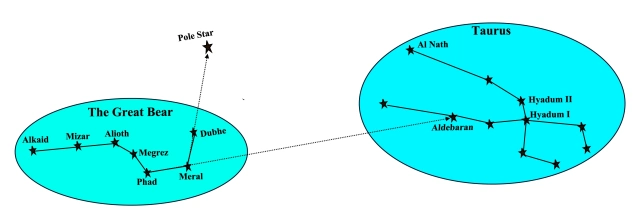


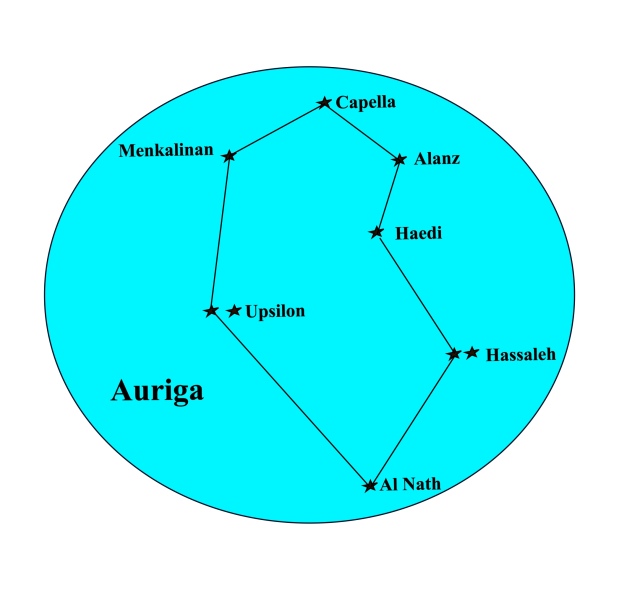
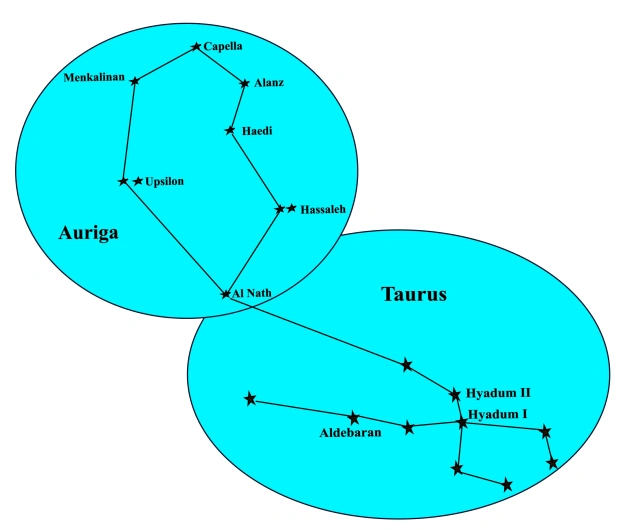
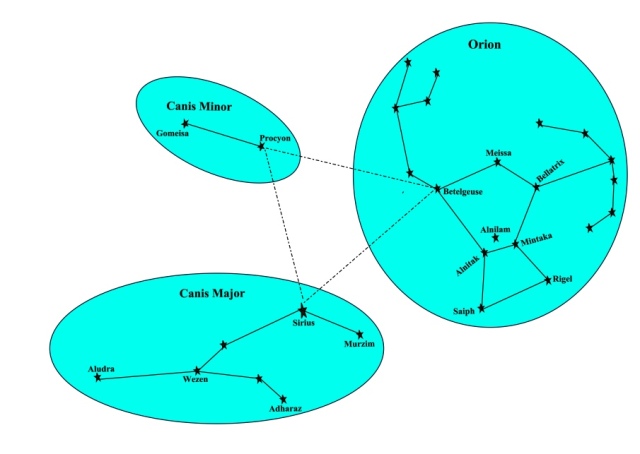
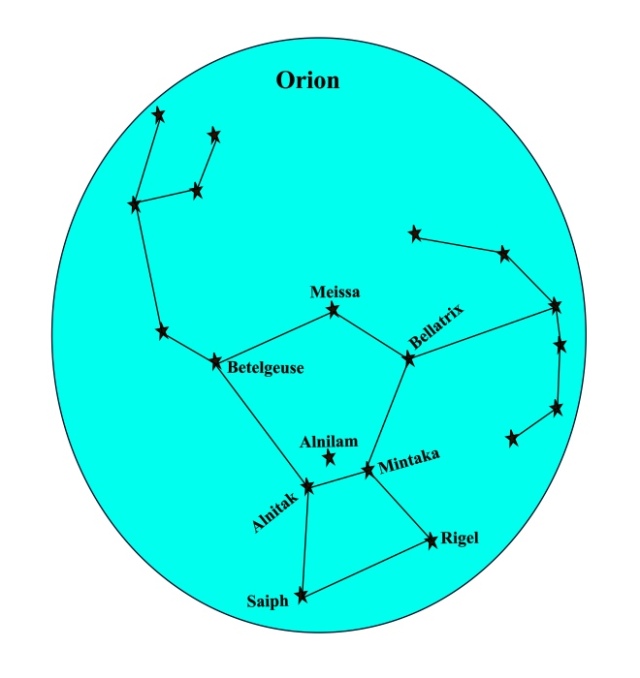
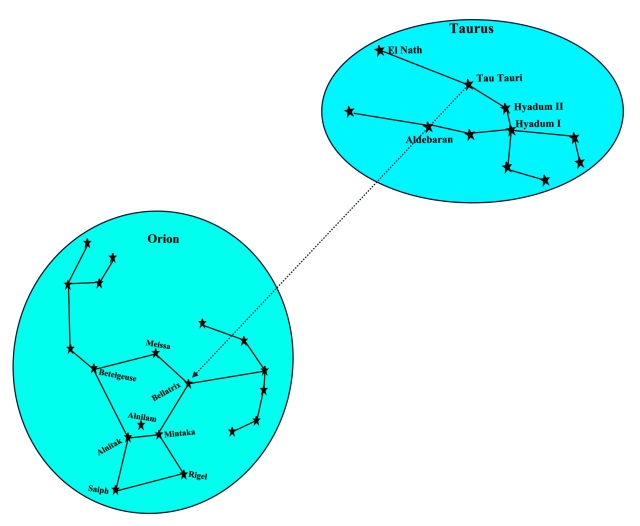

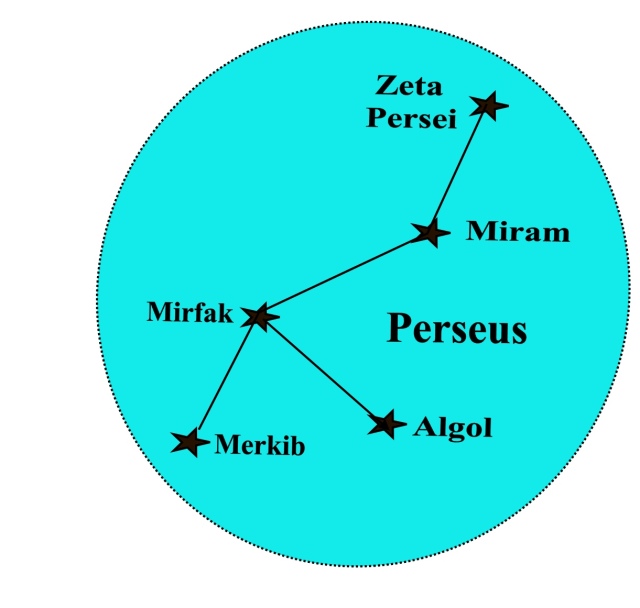
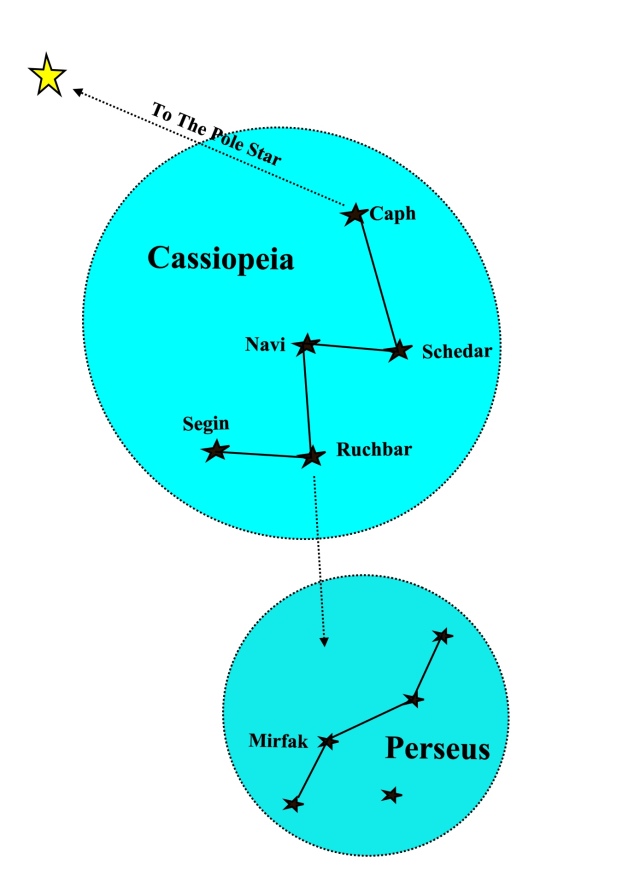
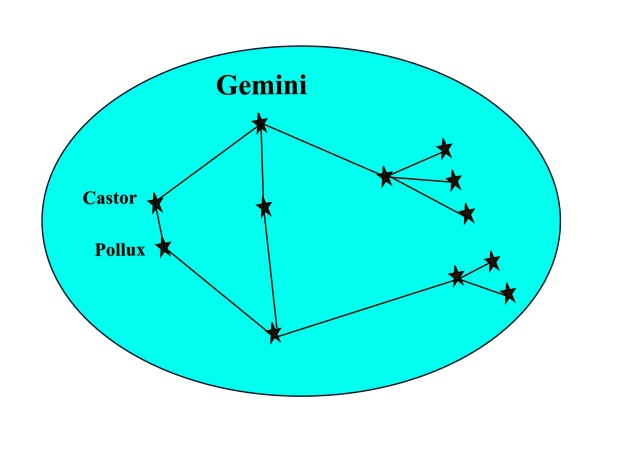
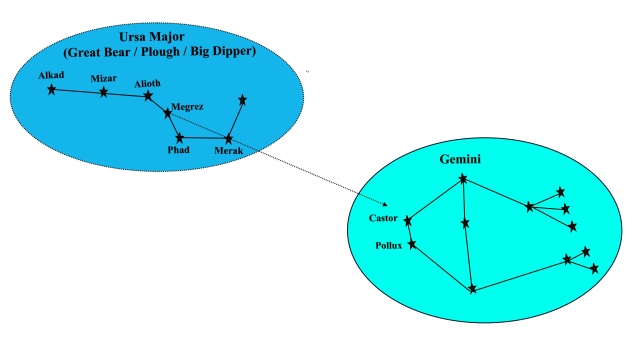
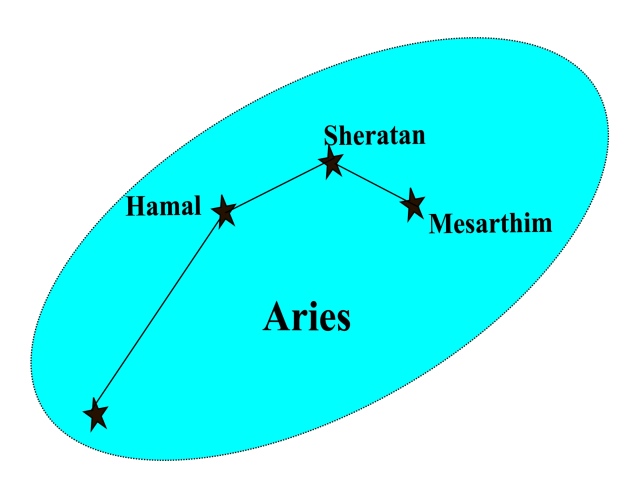
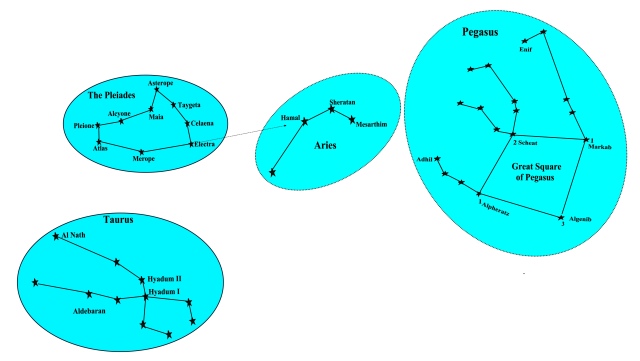





You must be logged in to post a comment.